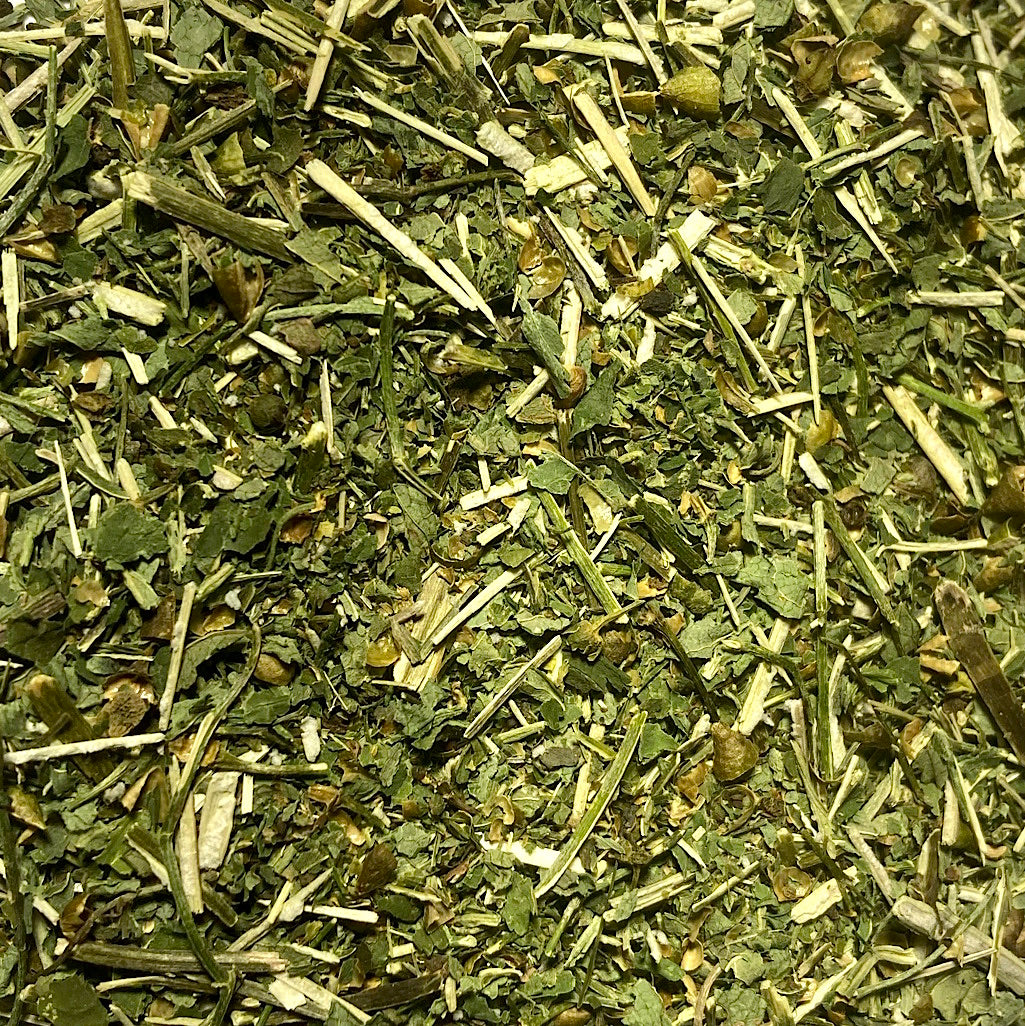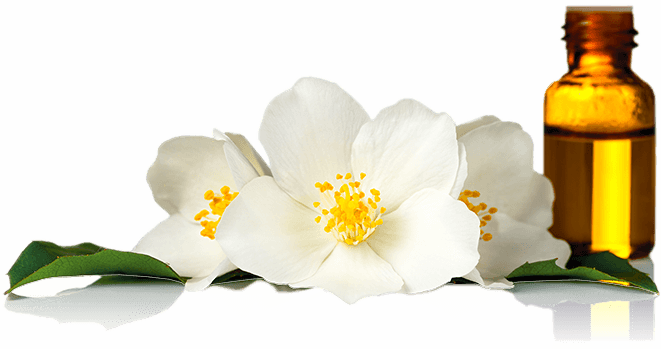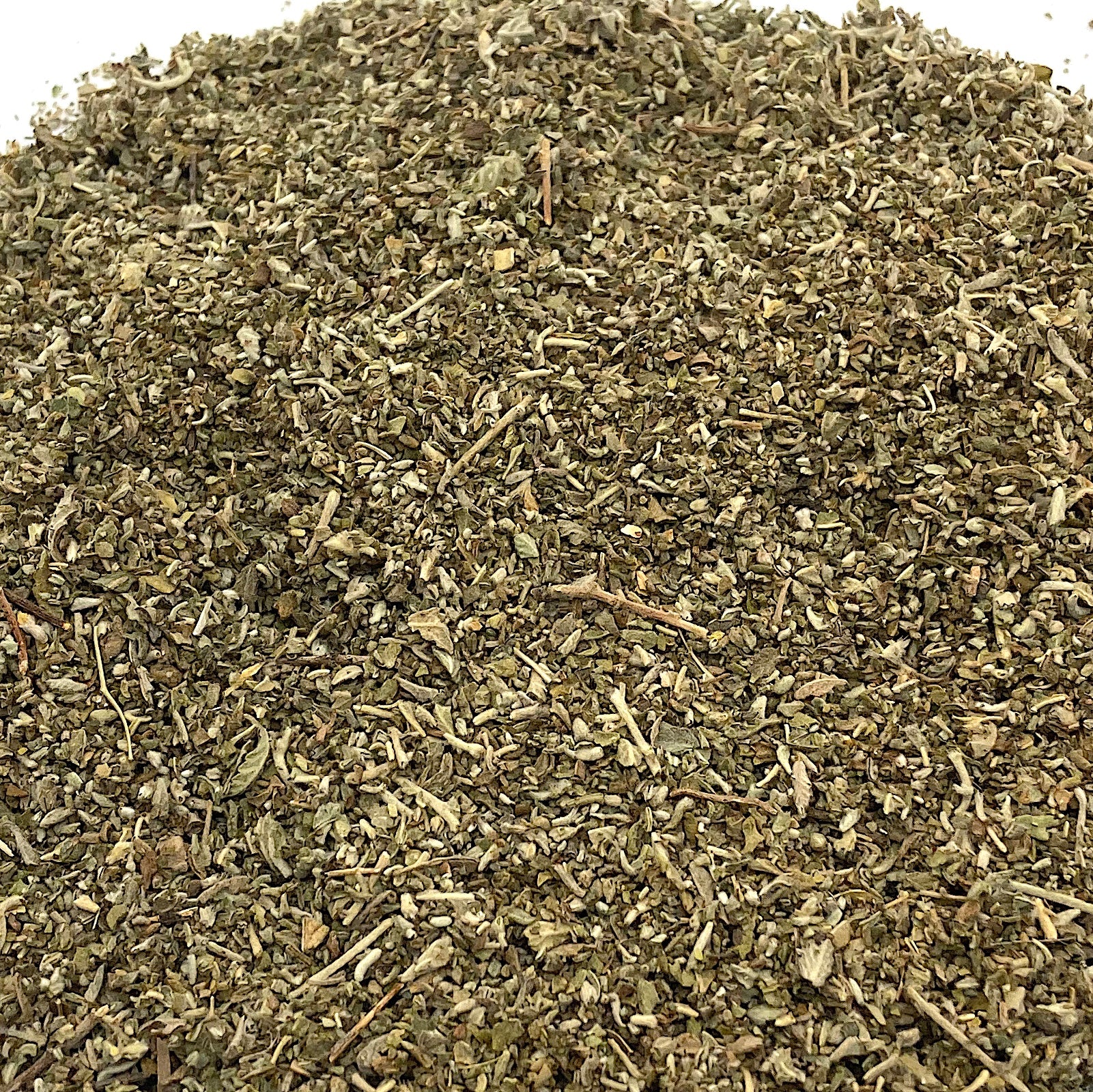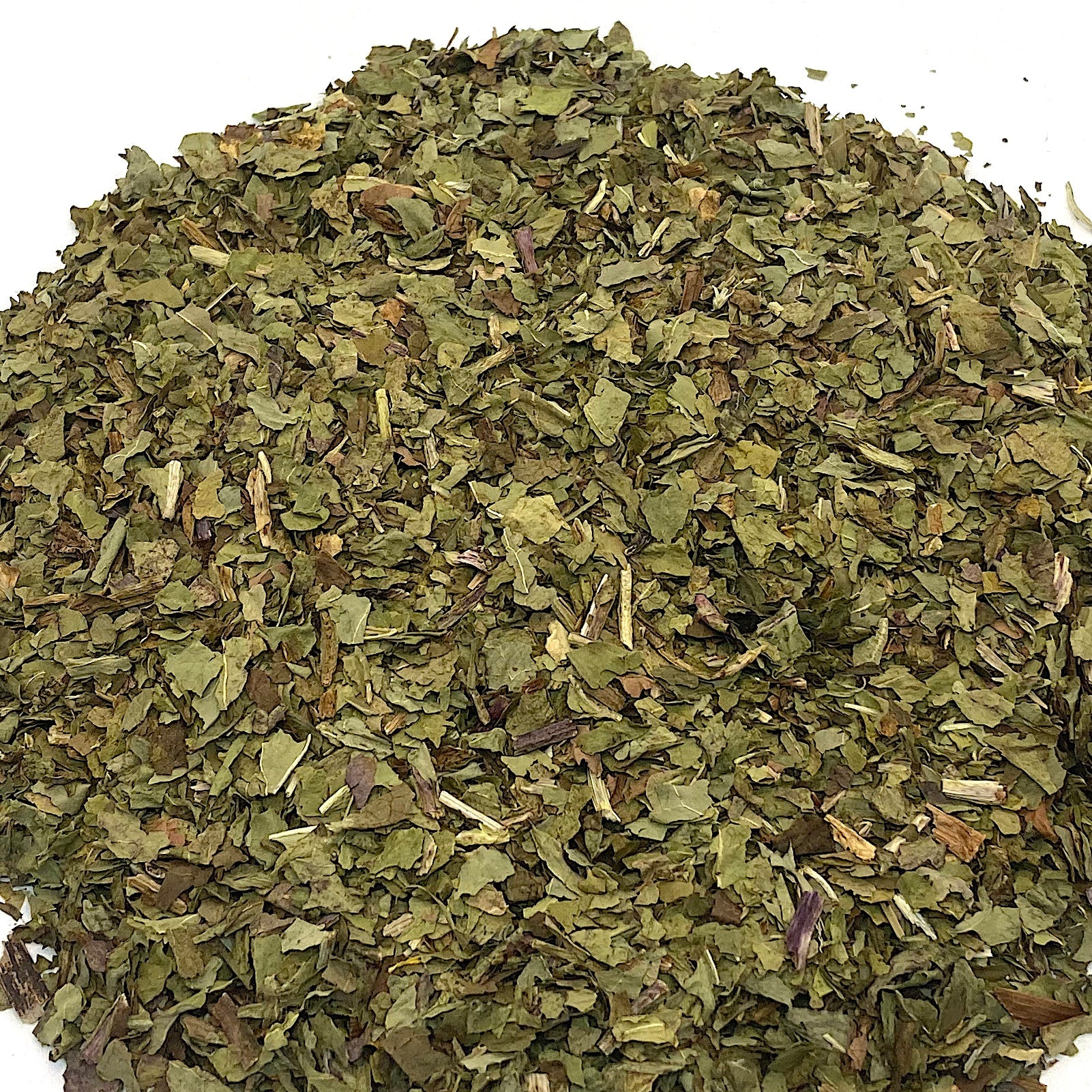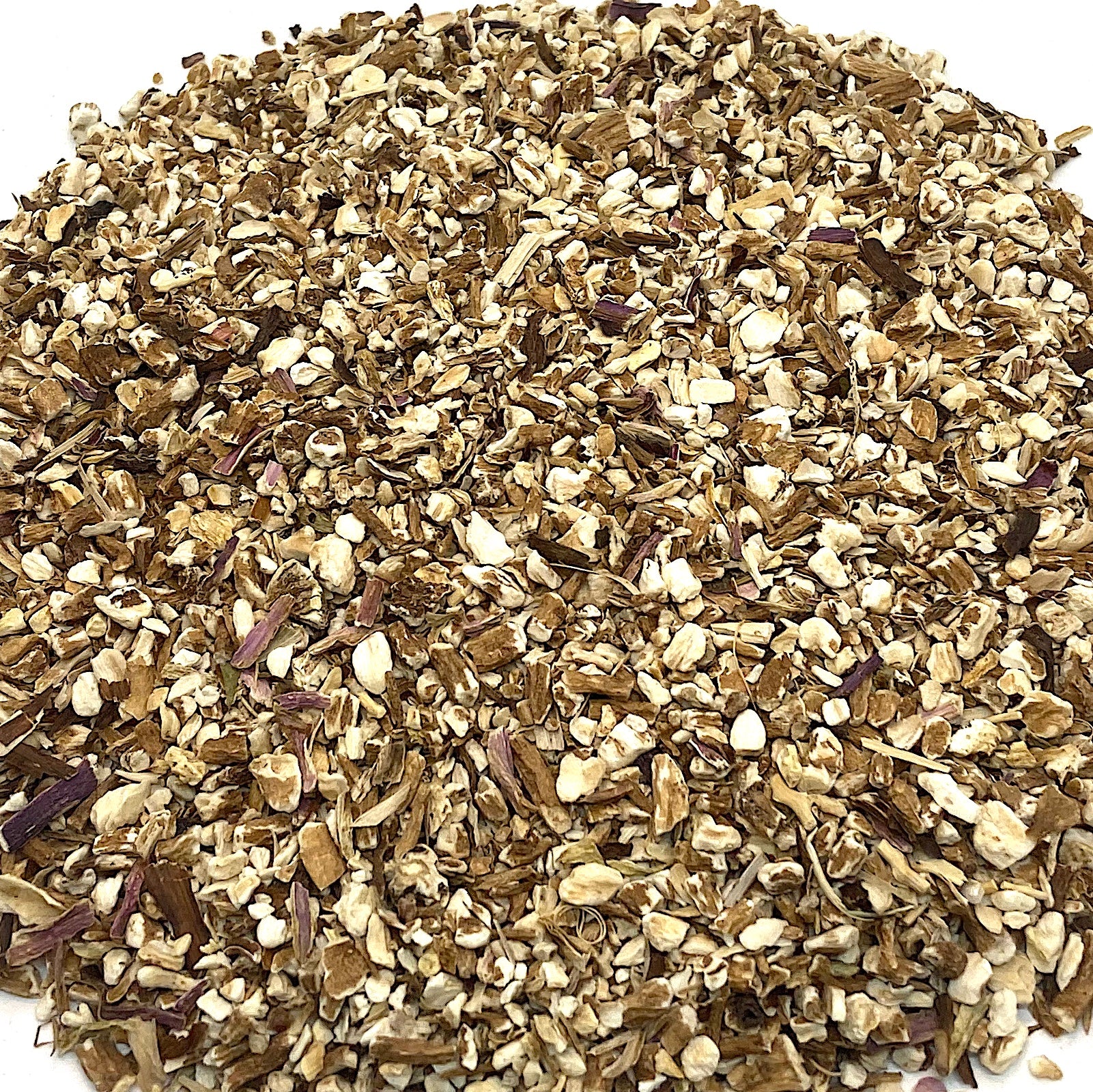Description
USA. Figwort (Scrophularia nodosa), Aerial Parts, Certified Organic
Common names: Scrofula Plant, Braunwurz, Carpenter's Square, Escrofularia, Kernelwort, Knopig Helmkruid, L'Herbe Chancreuse, Reuwe Di Tchin, Rose Noble, Siraca Otu, Throatwort, Herbe du Siège, Herbe au Ecrouelles, Knoldbrunro, Deilen Ddu
Family: Scrophulariaceae
Figwort is a perennial plant found in many temperate areas of the Northern hemisphere, growing around 3-5 feet tall. It thrives in moist, disturbed soils, and in forests.
The Scrophularia genus contains more than 200 species. Its name comes from the traditional use of Figwort for treating scrofula, a tuberculous infection of the cervical lymph nodes.
Herbalists consider Figwort an alterative, increasing the detoxification process. Typically, alterative herbs are given for skin conditions, and Figwort has been prescribed for eczema, psoriasis, acne, scabies, age spots, and pemphigus, either as a tea or tincture, or topically, as a fomentation. Like many alteratives, Figwort’s detoxifying action is effected partly through its mild diuretic effect, which makes it helpful for reducing edema.
It is especially noted for clearing lymphatic stagnation when the nodes are swollen, and for problems such as hemorrhoids (the “fig” in Figwort refers to an old term for piles), varicose veins and phlebitis, breast and ovarian cysts, tonsillitis, appendicitis, and lipomas. Detoxifying herbs, including Figwort, are often traditional remedies for arthritis. Figwort is said to relieve pain, stimulate the liver and kidneys, strengthen the contraction of the heart, assist wound and abscess healing, allay colic and constipation, and fight bacterial and parasitic infections.
Active compounds in Figwort included amino acids, flavonoids, iridoids, phenolic acids, saponins, alkaloids, and glycosides.
Figwort should be avoided during pregnancy and lactation.
*These statements have not been evaluated by the FDA. These products are not intended to diagnose, treat, cure or prevent any disease.

